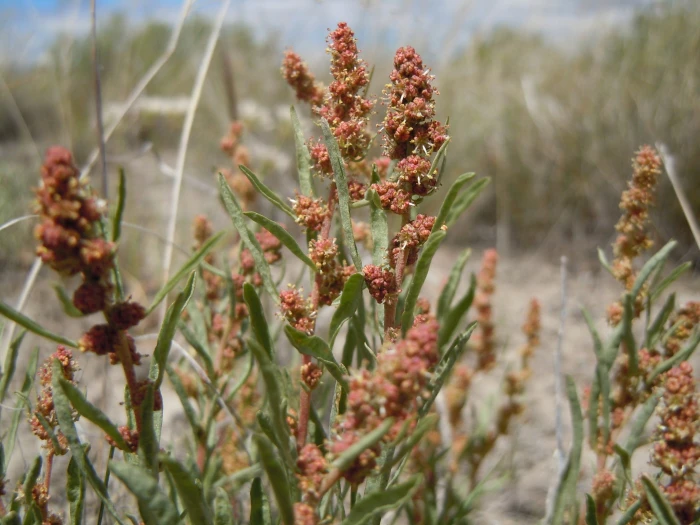Gardner’s Saltbush
(Atriplex gardneri)
Gardner’s Saltbush (Atriplex gardneri)
/
/

© Matt Lavin
CC BY 4.0
Image By:
© Matt Lavin
Recorded By:
Copyright:
CC BY 4.0
Copyright Notice:
Photo by: © Matt Lavin | License Type: CC BY 4.0 | License URL: http://creativecommons.org/licenses/by/4.0/ | Uploader: mattlavin | Publisher: iNaturalist |
























Estimated Native Range
Climate Requirements for Bilbao, Spain
| This Plant | Your Site | Plant Suitability for Your Location | ||
|---|---|---|---|---|
| • Precipitation | 3" - 41" | 47" | Aquatic | Aquatic |
| • High Temp. | 69°F - 110°F | 78°F | Your summer temperatures are normal for this plant. | Excellent |
| • Low Temp. | -10°F - 40°F | 41°F | OK, but your winter temperatures are warmer than normal for this plant | OK |
This plant may not grow well at your location - your precipitation is too high.
Summary
Atriplex gardneri, commonly known as Gardner’s saltbush, is a deciduous shrub or subshrub native to the arid and semi-arid regions of western North America. It is well-adapted to saline and alkaline soils, often found in salt flats, desert shrublands, and sagebrush communities. This plant exhibits a variable growth habit, ranging from 4 inches to 3 feet in height, with stems that may be prostrate or upright. The leaves of Gardner’s saltbush are also variable in shape and size, typically gray-green, covered with a fine layer of salt-encrusted hairs that help the plant conserve water.
Gardner’s saltbush is valued for its drought tolerance and ability to thrive in poor soils, making it a useful species for restoration projects and erosion control. It is also fire-resistant, contributing to its resilience in harsh environments. The plant’s tolerance to saline conditions makes it an important food source for wildlife, such as antelope, rabbits, and pronghorn, and it can be used in wildlife habitat plantings. In cultivation, it requires minimal maintenance, thriving in full sun and well-drained soils. While not known for showy flowers, its foliage provides textural interest in xeriscaping and native plant gardens.CC BY-SA 4.0
Gardner’s saltbush is valued for its drought tolerance and ability to thrive in poor soils, making it a useful species for restoration projects and erosion control. It is also fire-resistant, contributing to its resilience in harsh environments. The plant’s tolerance to saline conditions makes it an important food source for wildlife, such as antelope, rabbits, and pronghorn, and it can be used in wildlife habitat plantings. In cultivation, it requires minimal maintenance, thriving in full sun and well-drained soils. While not known for showy flowers, its foliage provides textural interest in xeriscaping and native plant gardens.CC BY-SA 4.0
Plant Description
- Plant Type: Shrubs
- Height: 1-3 feet
- Width: 1-3 feet
- Growth Rate: Slow
- Flower Color: Brown, Green, Yellow
- Flowering Season: Spring, Summer, Fall
- Leaf Retention: Deciduous
Growth Requirements
- Sun: Full Sun, Part Shade
- Water: Low
- Drainage: Fast, Medium, Slow
Common Uses
Drought Tolerant, Erosion Control, Fire Resistant, Low Maintenance, Salt Tolerant
Natural Habitat
Native to arid and semi-arid regions of western North America, including salt flats, desert shrublands, and sagebrush communities
Other Names
Common Names: Gardner’s Orache , Basin Saltbush , Moundscale
Scientific Names: Atriplex gardneri , Atriplex gordonii , Atriplex nuttallii subsp. gardneri , Atriplex nuttallii var. gardneri , Obione gardneri
GBIF Accepted Name: Atriplex gardneri